THE DAY OF THE ROSES
On the 21st of May, the white roses in my garden were in bloom, so I spent some time around the flowers.
It was early in the morning, and my neighborhood was very quiet, except for the birds that were chatting loudly on the treetops and rooftops around me.
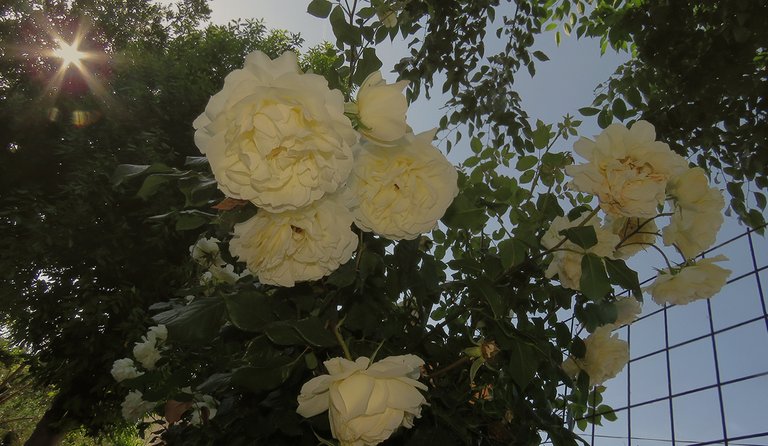
Spring was in the air and so was the scent of the roses.
The flowers were there since April, but I wasn't interested in photographing them until that morning when I noticed some predatory bugs that will appear later in the post, and then, soon after, this minuscule insect on one of the many white petals. It looked like something that I have never seen before, so I prepared the macro lens to explore the details of its anatomy. A look through the macro lens confirmed my first thought. This little creature was new to me.
A day or two later, after a relatively long Internet search, I found out the name of the species. This is the Ectopsocus petersi, a barklouse from the Ectopsocidae family. The veins on the beautiful wings of the insect shown in these photographs can be admired only when magnified through the appropriate lens. They are too small for the naked eye. In the following photograph ...
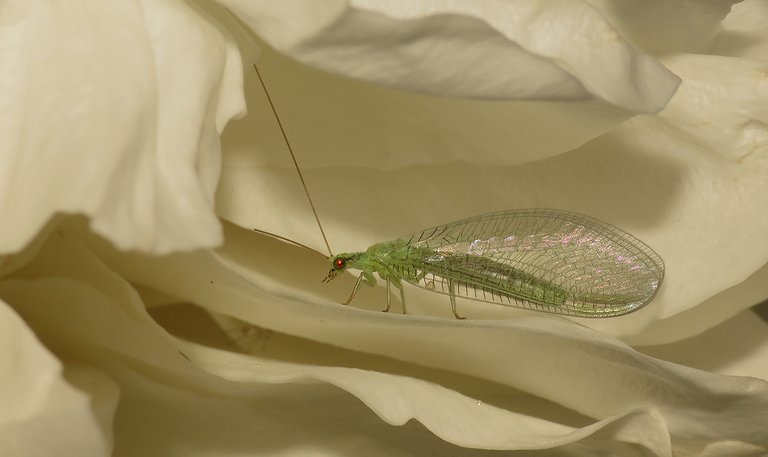
... you can see another insect with beautiful veined wings ...
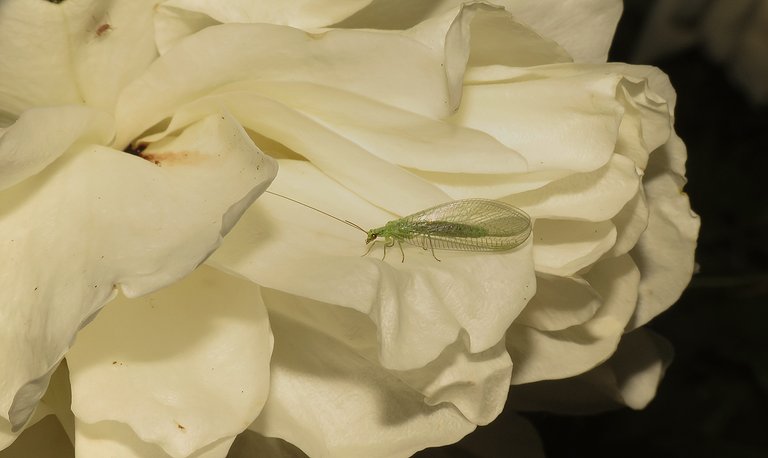
... that looked great among the white petals.
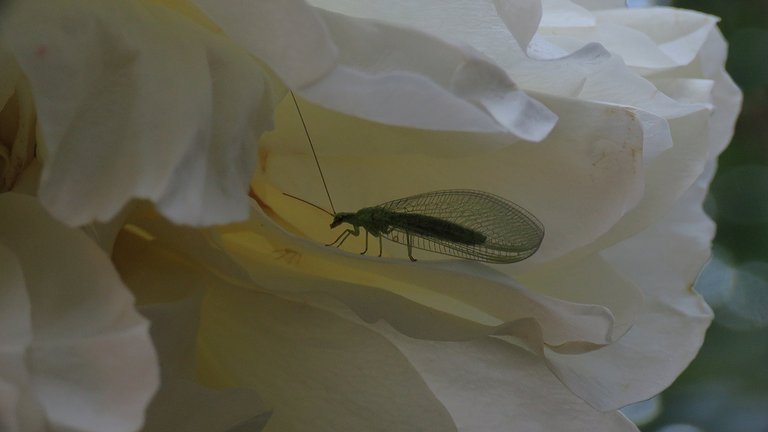
This is the Chrysoperla carnea, commonly known as the common green lacewing.
The light was pretty low in that corner of my yard, so I used the flash for the macro shots. That strong direct light helped reveal the details and keep the shutter speed fast, but when it comes to capturing the authentic feel of the early morning atmosphere, the subtle ambient liked worked much better ...

... so I took also a couple of shots with longer exposure. I mean, I took more than twenty, but only a couple of them weren't blurred.
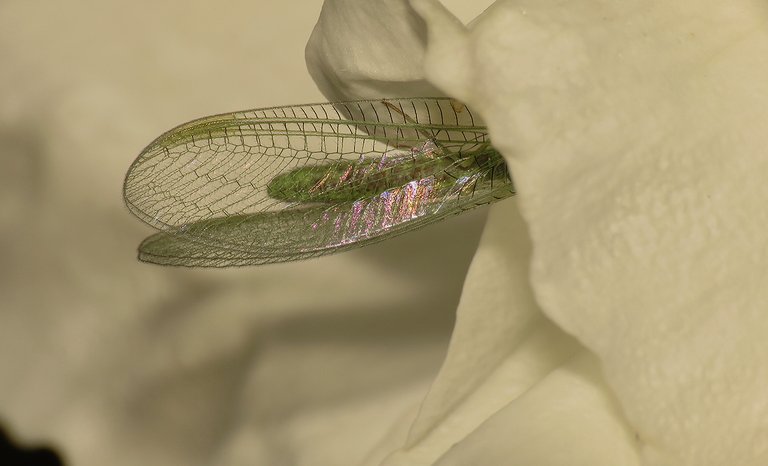
At one point the lacewing disappeared in the narrow spaces between the petals, and I got out of the macro view ...
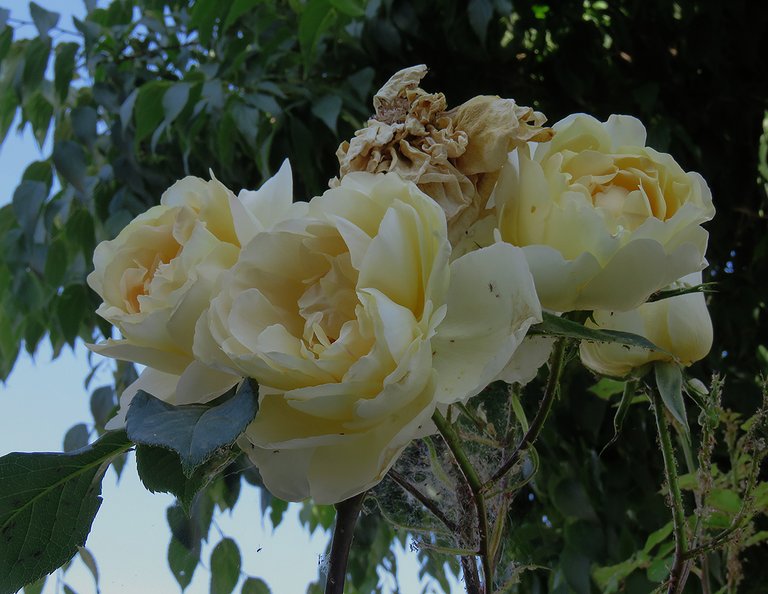
... to get another group portrait of a bunch of roses.
Here you can see another minuscule insect that I haven't seen before or since the May 21st of this year.
It's another barklouse. The Graphopsocus cruciatus from the Stenopsocidae family. One of the Internet sources states the following: "Barklice feed mainly on fungi, algae, lichen, and other microflora. They can be abundant on foliage that has a coating of sooty molds following infestation with aphids or another sap-sucking insect."
That helps explain the presence of these insects on the roses.
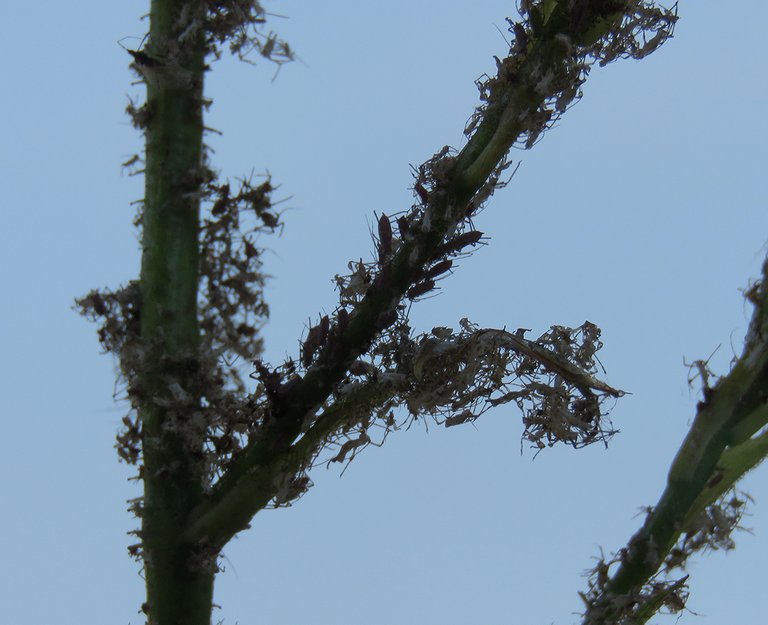
Some branches were covered with aphids ...

... and some of those aphids ...
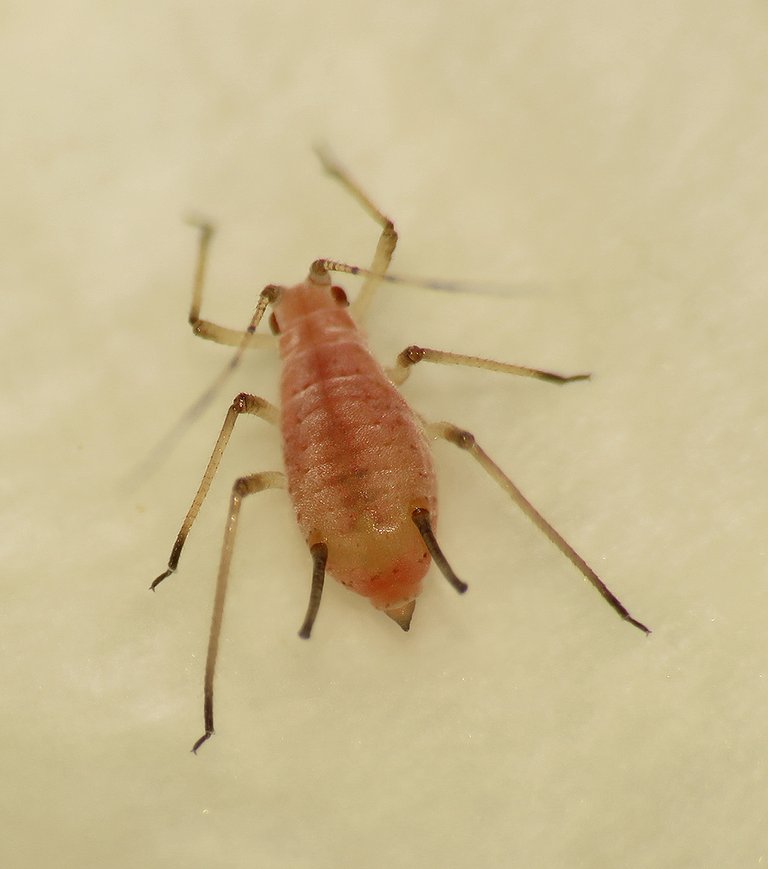
... ended up on the petals. The colors varied from aphid to aphid. Not much, but they weren't exactly the same. This one was brown-orange with a bit of magenta added to the mix.
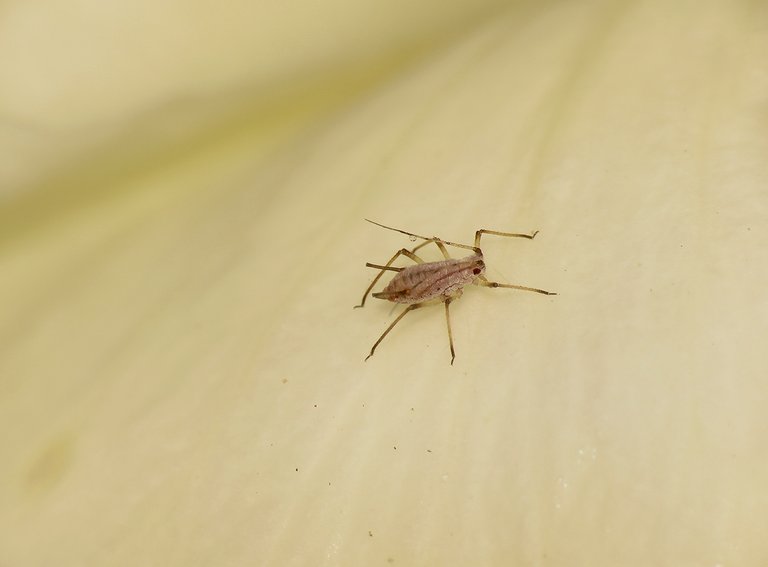
This one, photographed on the neighboring flower, was slightly different.

Its color was some kind of pale violet.
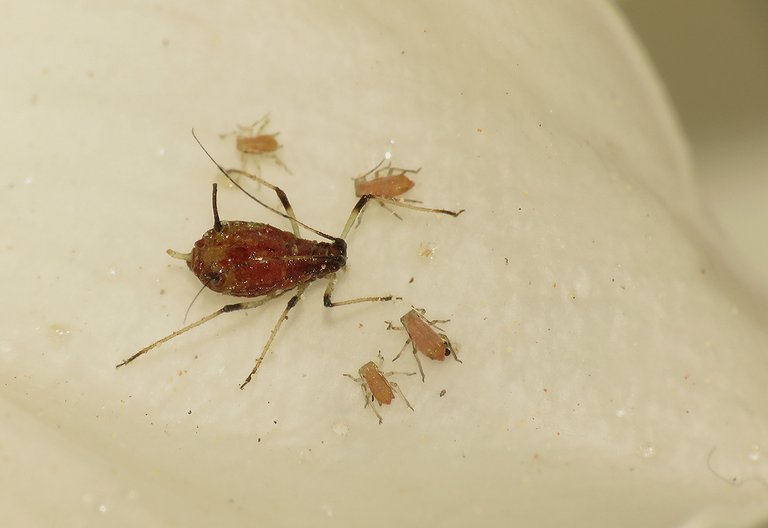
These are all Macrosiphum rosae aphids.
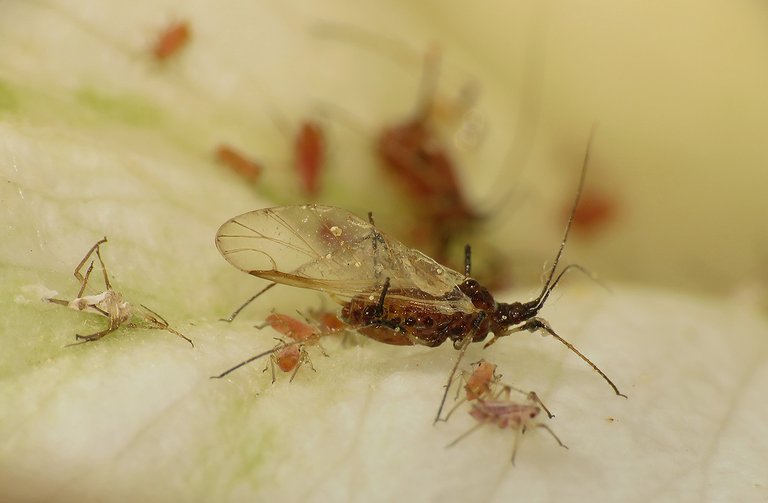
As the word "rosae" in the scientific name suggests, these aphids feed and reproduce on a wide variety of cultivated roses. After quite a few wingless individuals, you can see a winged one in the above photograph.
The winged Macrosiphum rosae aphid shown in this photograph just came out of its wingless nymphal skin. While the adults can be winged or wingless, the nymphs don't have wings. As you can see through this fairly long series of aphid-themed photographs, this species can be green or in various shades of pink, magenta, and violet.
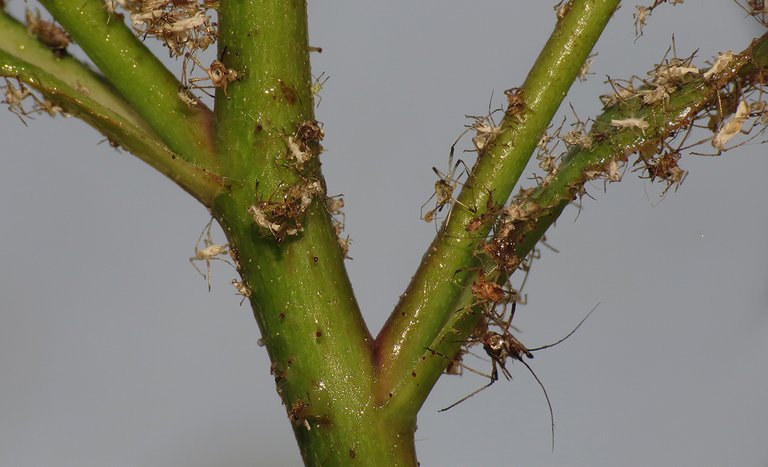
With many aphids feeding, growing, and molting on the plant, some branches are covered with accumulated exoskeletons.
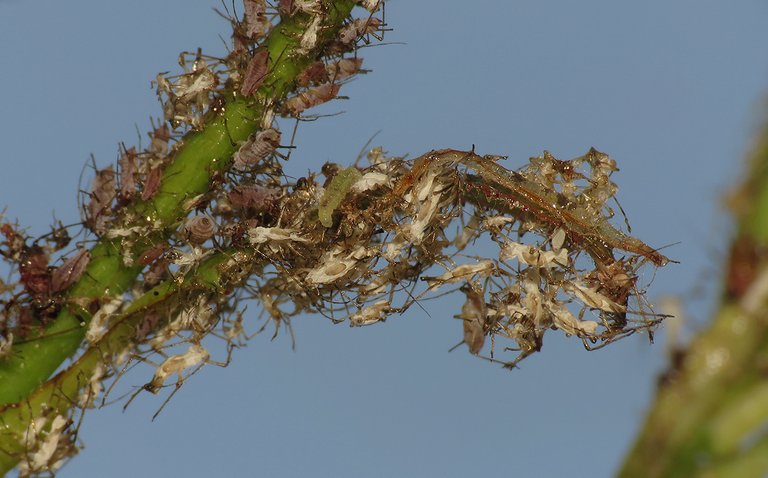
In some places, the layer can be pretty thick.
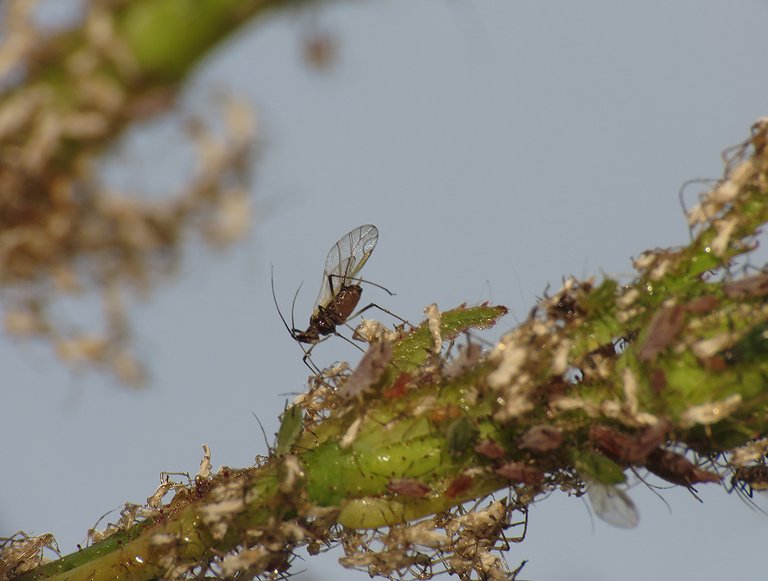
In this photograph, the focus is on a winged adult surrounded by all that stuff left after the molting. The aphids are at the base of all the action I found on that occasion around the roses. Their presence attracts many predators.
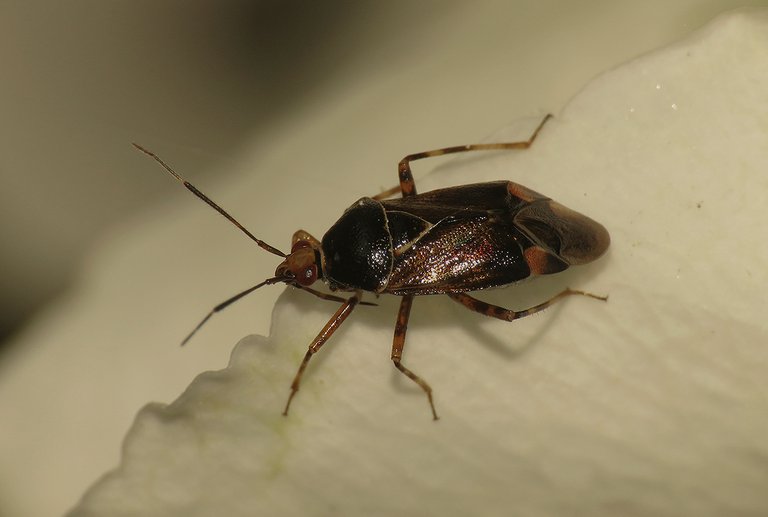
This is the Deraeocoris rubber, a bug from the Miridae family that feeds mainly on aphids and other small insects. I saw one of these bugs with a captured aphid, in fact, that scene started this macro expedition around the roses. I was passing by the roses, ready to enter the car and drive to the grocery store, when I noticed the bug with its prey. The camera was like always with me, but the macro lens wasn't. I had to go back into the house and find it. Once I returned with the lens ready to use, the bug has finished its meal.
When these two photographs were taken, the Deraeocoris rubber was cleaning the proboscis after breakfast.
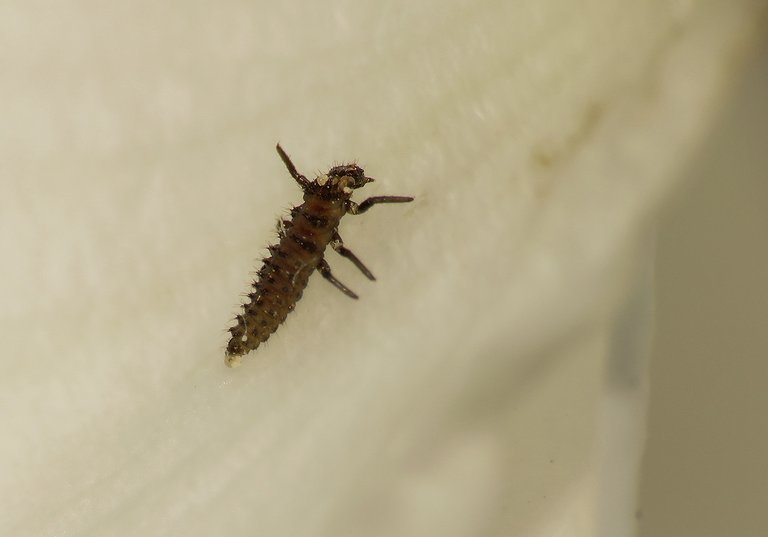
This larva is also an aphid hunter. As an adult, this will be a beetle from the Coccinellidae family. Which means a ladybug. Quite a few species look very similar at this larval stage, so I can't tell you which one exactly is shown in the above photograph. This isn't the only Coccinellidae larva I found on that occasion.

You can see another one here.
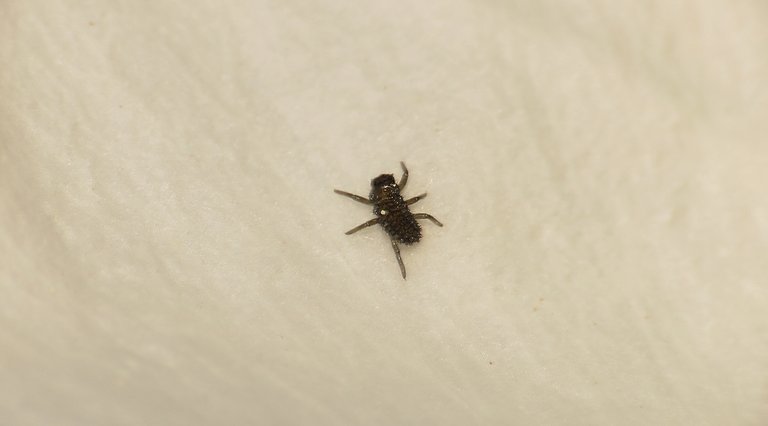
It looks a bit different. Maybe is another species. Or, maybe, the larva is just younger and smaller.
Do you remember the common green lacewing introduced earlier in the post?
Well, this neuropteran insect from the Chrysopidae family was also there for the aphids. In the above photograph, especially if you enlarge the picture by clicking on it, you can see the Chrysoperla carnea devouring one of those Macrosiphum rosae aphids.
Through this set of three consecutive shots, you can follow the process. In the last photograph from the left, only one aphid leg is still outside the lacewing's mouth. In the following photograph ...

... the lacewing is cleaning its mouth after the meal.
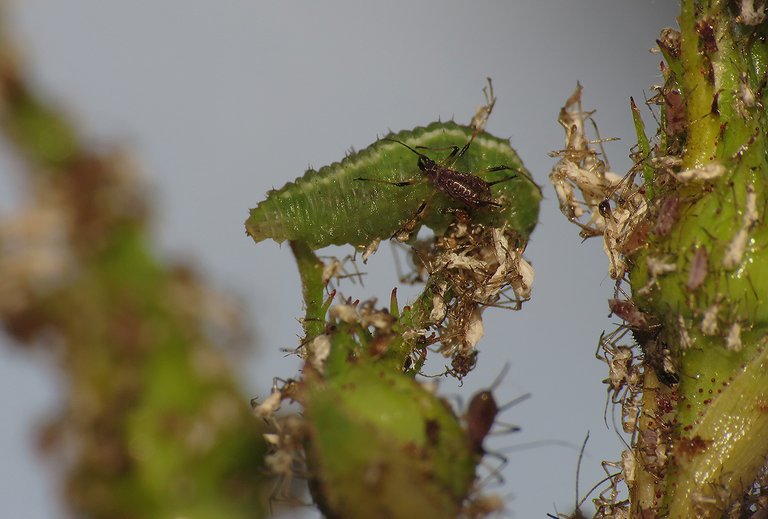
Here you can see another predatory larva. This is the larva of a fly from the Syrphidae family. Can't tell you which species, but the genus is probably Epistrophe.

These hunts look a bit weird because the aphids don't run from the predator. They are slow and pretty passive so the larva picks them like fruits. In this case, a pretty big wingless aphid is standing on the larva that's eating another, much smaller one.
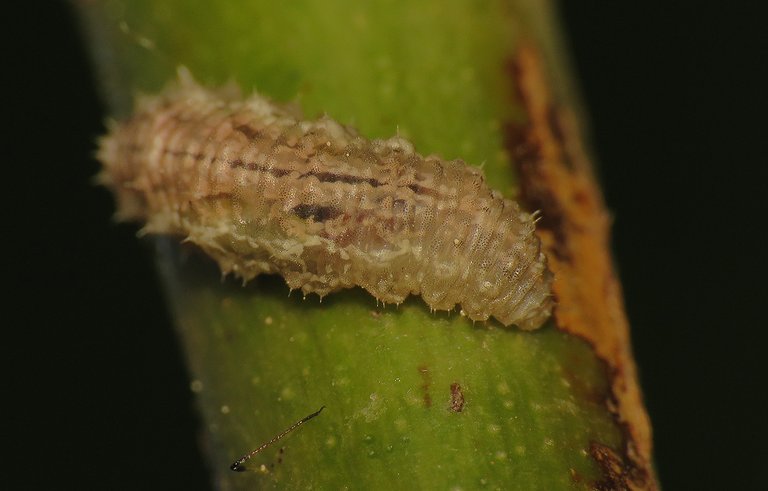
Here you can see another Syrphidae larva. In this case, I'm pretty sure that the genus is Eupeodes.
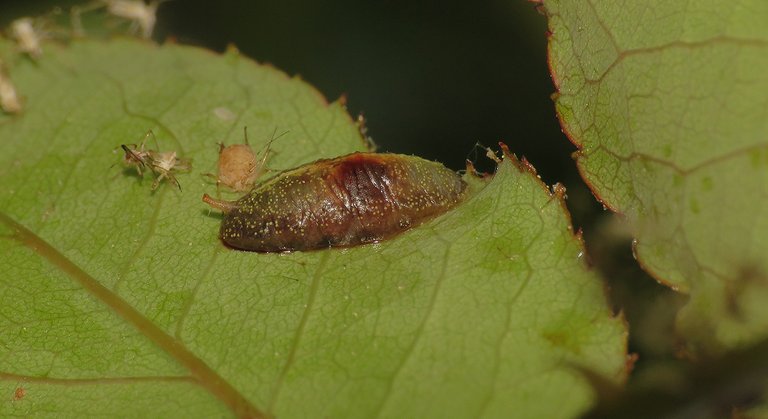
This larva looks like something from the genus Epistrophe of the Syrphidae family.
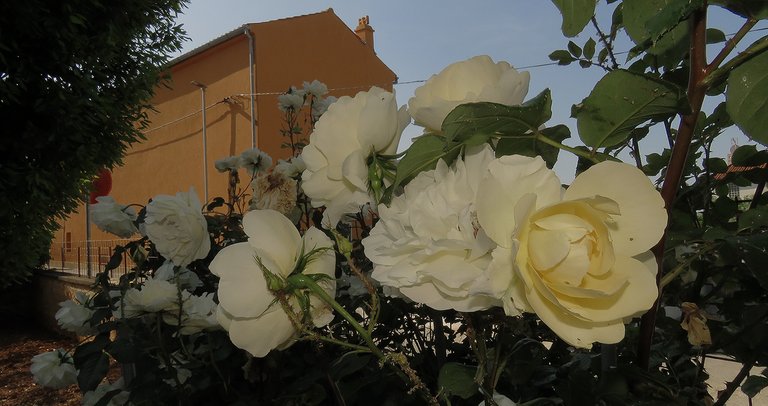
In this photograph, you can take a break from the macro view, and take another look at the roses and one of the houses across the street behind them.
This very small beetle photographed on the petals is the Anthrenus verbasci ...
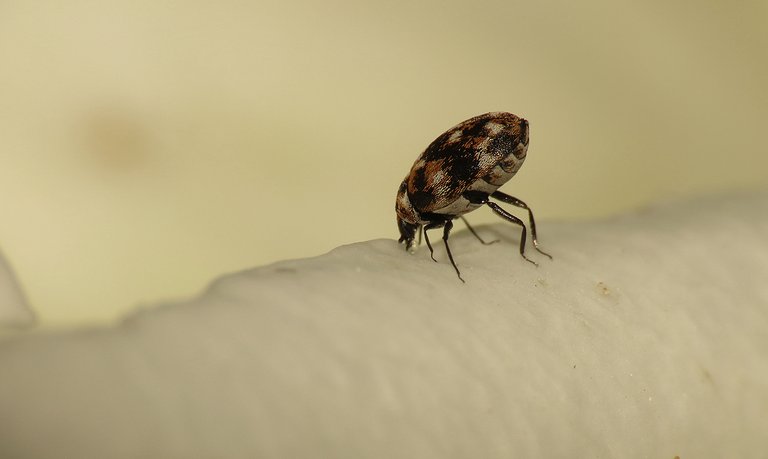
... a species from the Dermestidae family.
Adults eat pollen and nectar.

Larvae eat various materials that can be found in a house, including carpets, furniture, and clothing.
This ant ...
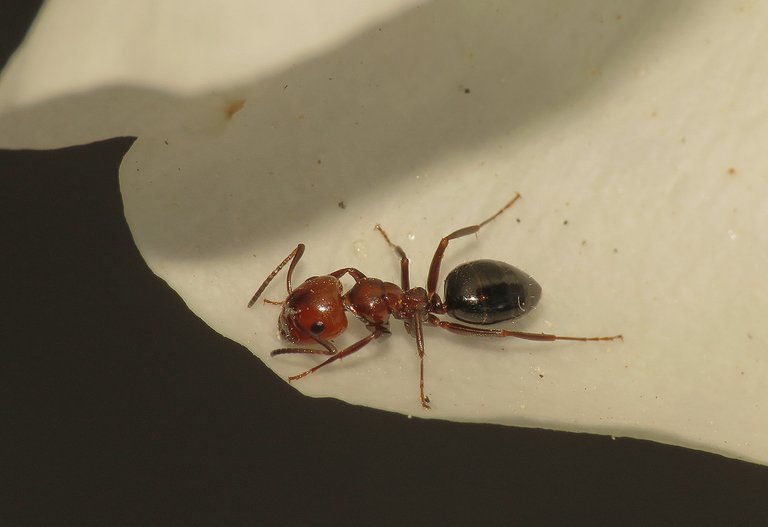
... the Camponotus lateralis ...
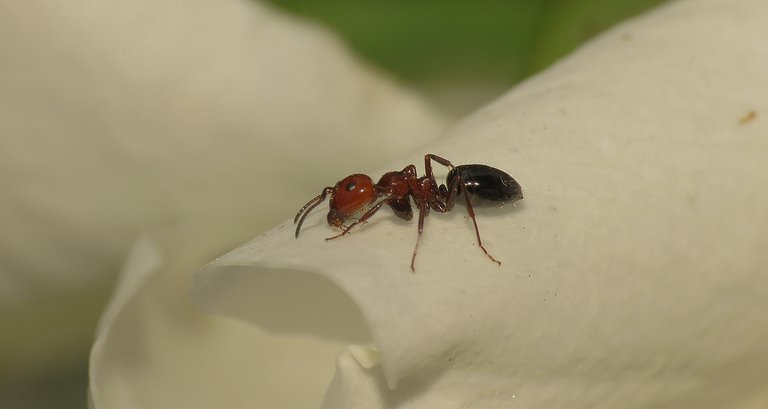
... was eating something on the white petals.
Or so it looked, at least.
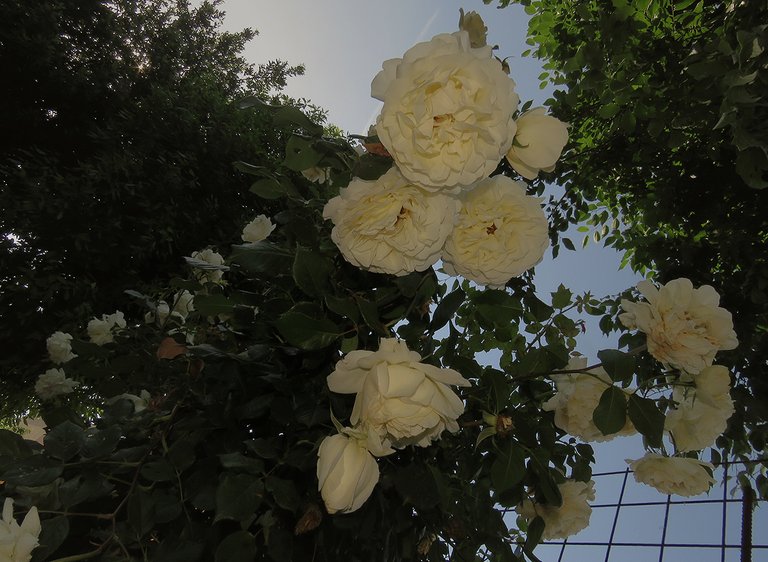
As the flowers are aging ...
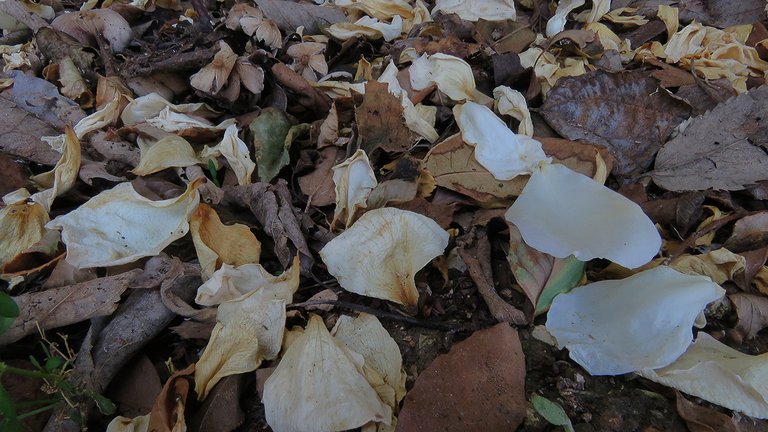
... the petals are falling. Down on the ground they get mixed with the leaves fallen from the nearby Laurus nobilis and Celtis australis trees.
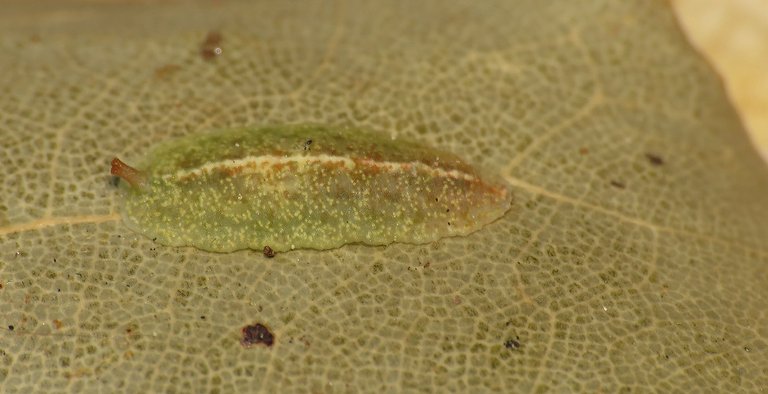
On that leaf litter, I found another Syrphidae larva. This one was well camouflaged on the surface of the fallen leaf.
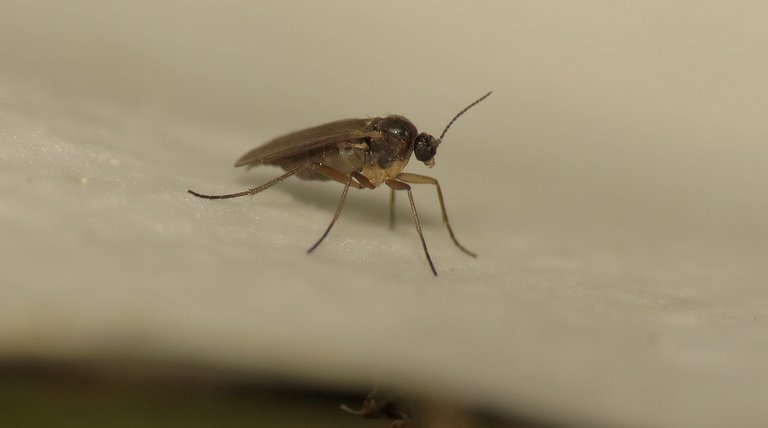
This fungus gnat, the Bradysia tilicola from the Sciaridae family ...
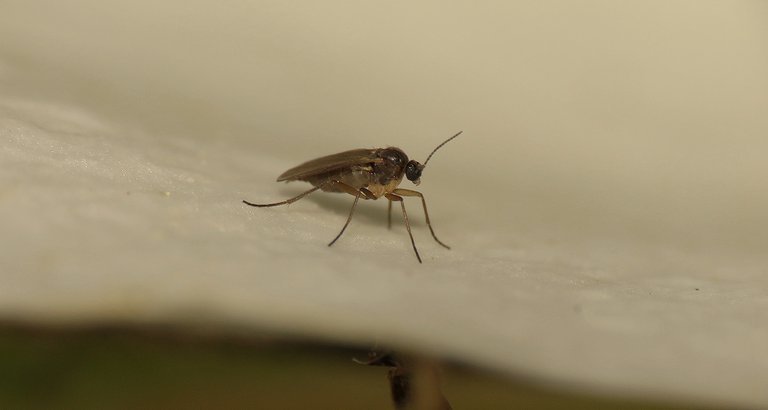
... was resting on the fallen petal.

On one of the dead leaves ...

... I found these interesting formations.
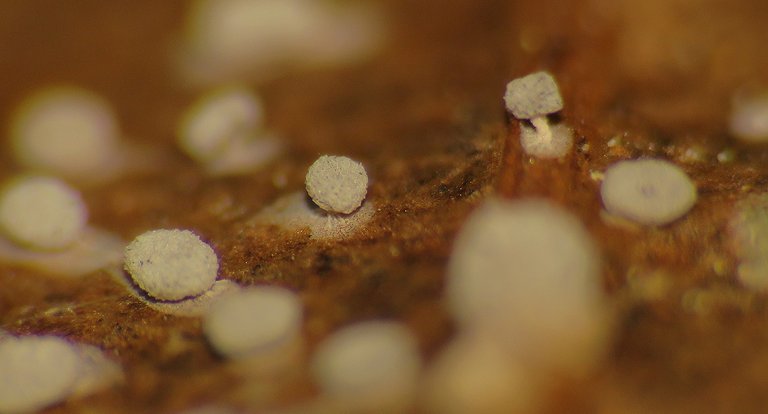
I can't tell you what is this exactly ...
... but it sure looks like some fungal growth.
Through the macro lens, some of those things looked like minuscule mushrooms.

And that's it.
The post ends here. Down on the ground. Under the shrubs with fragrant white flowers.
The following links will take you to the sites with more information about some of the protagonists of this post. I found some stuff about them there.
https://en.wikipedia.org/wiki/Ectopsocus_petersi
https://www.google.hr/search?q=Ectopsocus+petersi&sxsrf=ALiCzsb0eKENV5jP9npKVmv8RTuHQ87NmA:1669501911125&source=lnms&tbm=isch&sa=X&ved=2ahUKEwjU2_Si88z7AhWS_rsIHWl7DMEQ_AUoAXoECAMQAw&biw=1837&bih=749&dpr=1
https://en.wikipedia.org/wiki/Chrysoperla_carnea
https://en.wikipedia.org/wiki/Graphopsocus_cruciatus
https://bugguide.net/node/view/151997
https://en.wikipedia.org/wiki/Macrosiphum_rosae
https://www.britishbugs.org.uk/heteroptera/Miridae/deraeocoris_ruber.html
https://www.google.hr/search?q=Epistrophe+larva&sxsrf=ALiCzsYZ_d9i0Sf0ePcqO-ori82PHDVtLw:1669502408329&source=lnms&tbm=isch&sa=X&ved=2ahUKEwiNw_-P9cz7AhVegf0HHbaBCDwQ_AUoAXoECAIQAw&biw=1837&bih=749&dpr=1
https://www.google.hr/search?q=eupeodes+larva&sxsrf=ALiCzsa7gwne4HCojI2rVqk-GjPB1lhNZA:1669502698193&source=lnms&tbm=isch&sa=X&ved=2ahUKEwj-zZua9sz7AhW_hv0HHTroDVoQ_AUoAXoECAMQAw&biw=1837&bih=749&dpr=1
https://en.wikipedia.org/wiki/Varied_carpet_beetle
https://www.antwiki.org/wiki/Camponotus_lateralis
https://www.gbif.org/species/1488558
THAT'S ALL. HOPE YOU ENJOYED THIS GARDEN SAFARI. AS ALWAYS HERE ON HIVE, THE PHOTOGRAPHS ARE MY WORK - THE END.
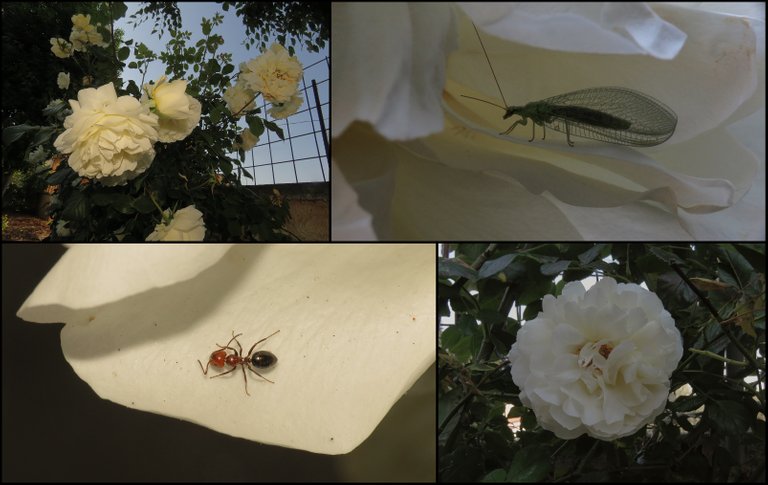
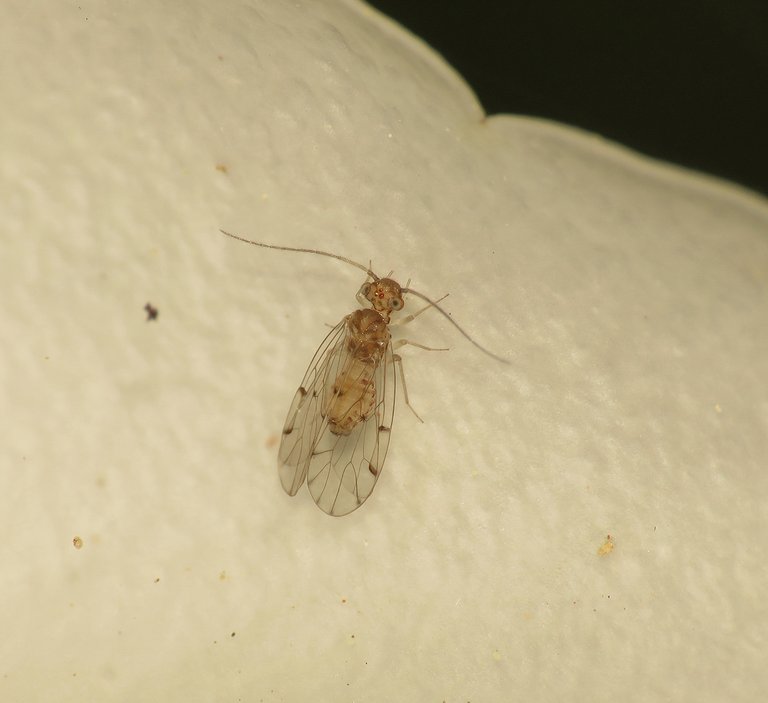

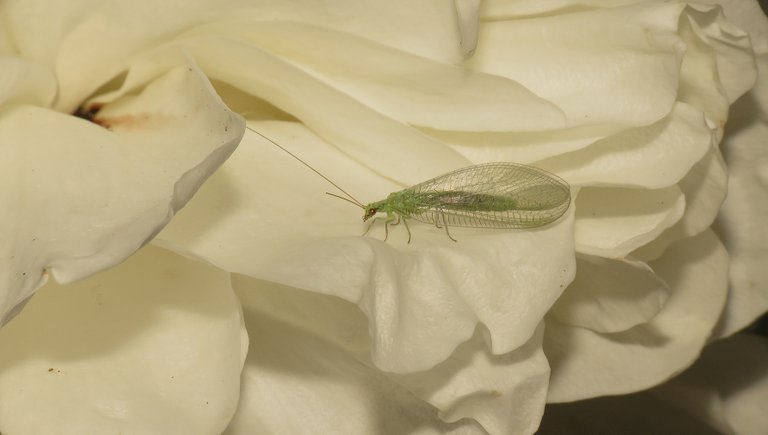
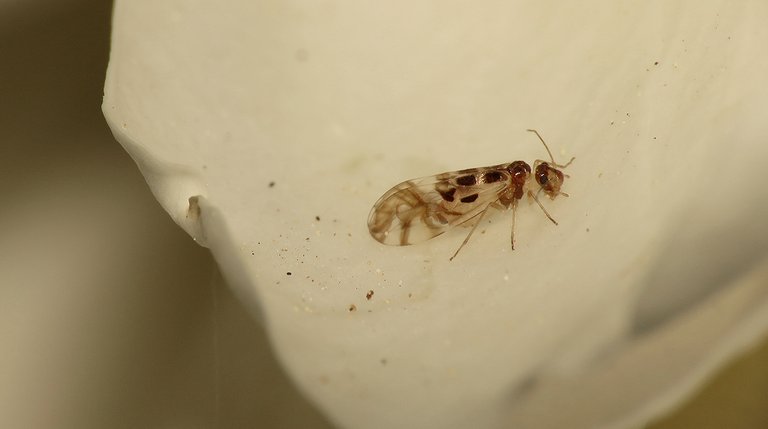

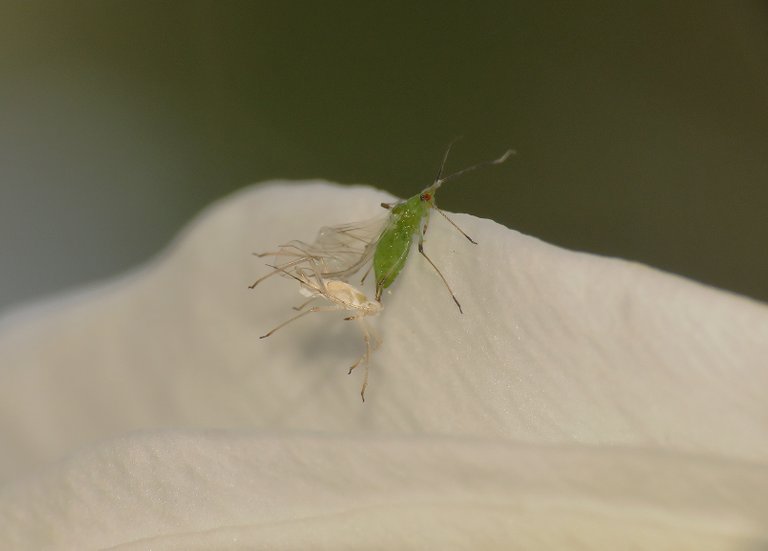
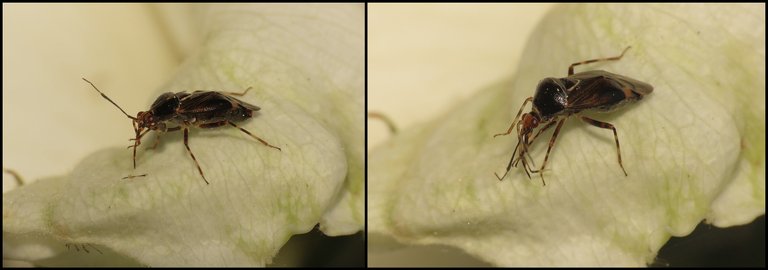
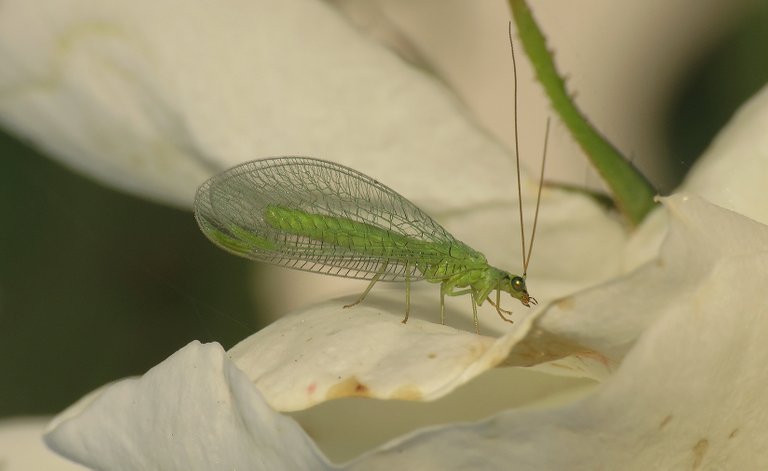
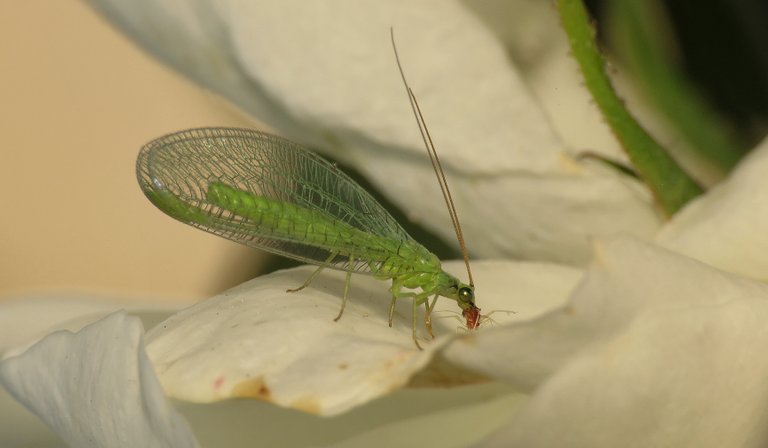

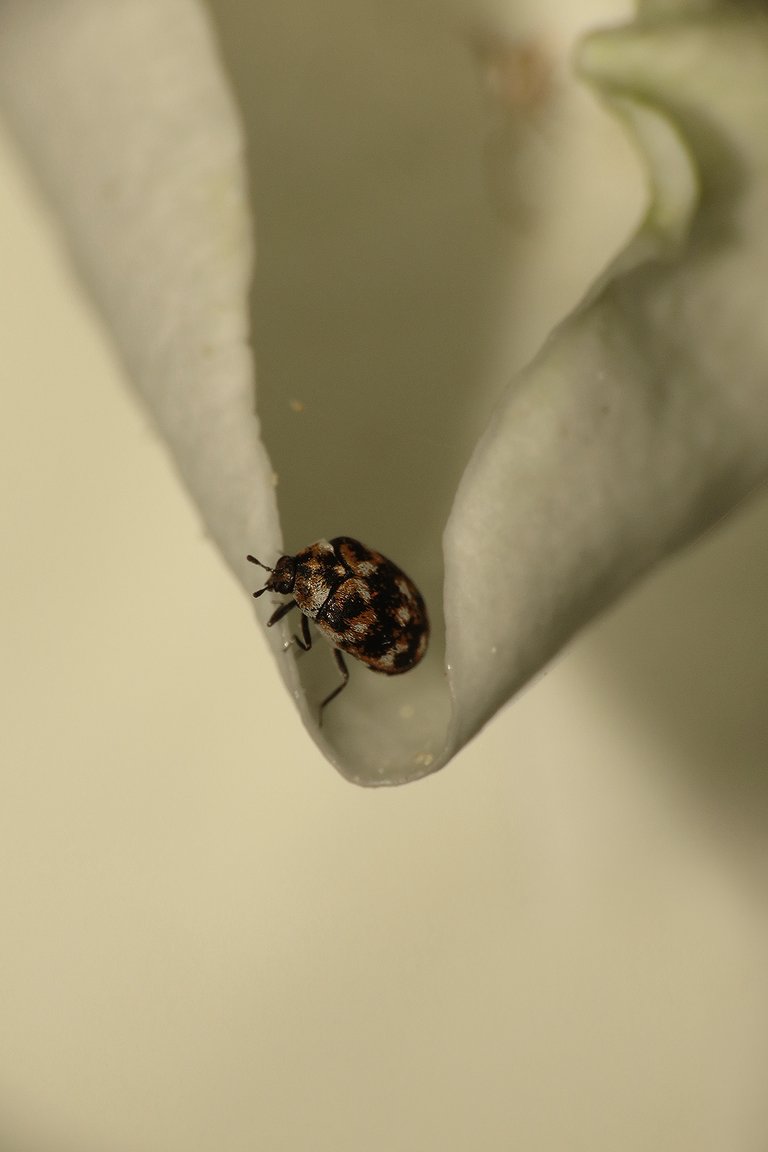

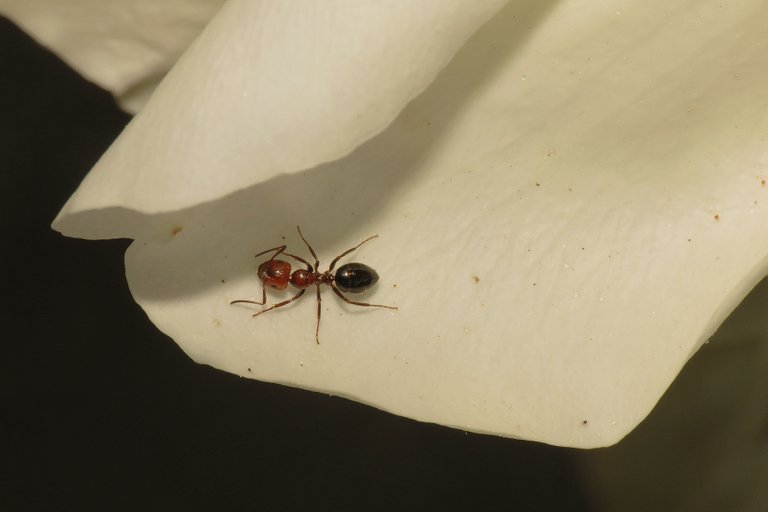
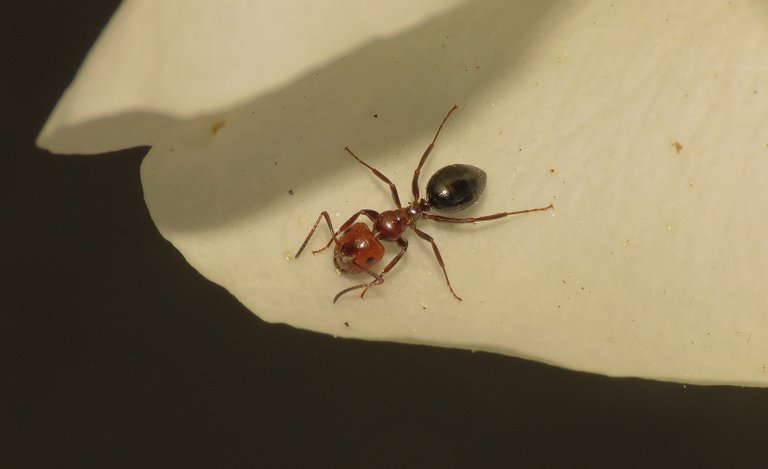
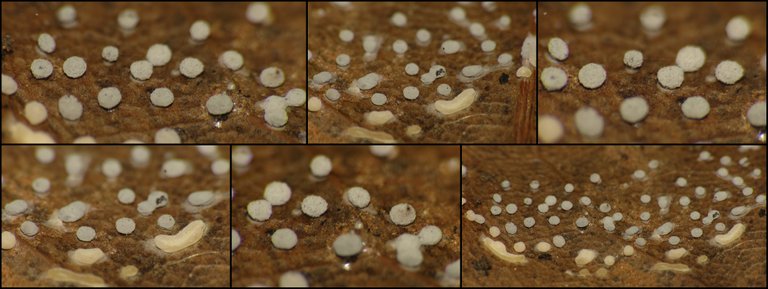
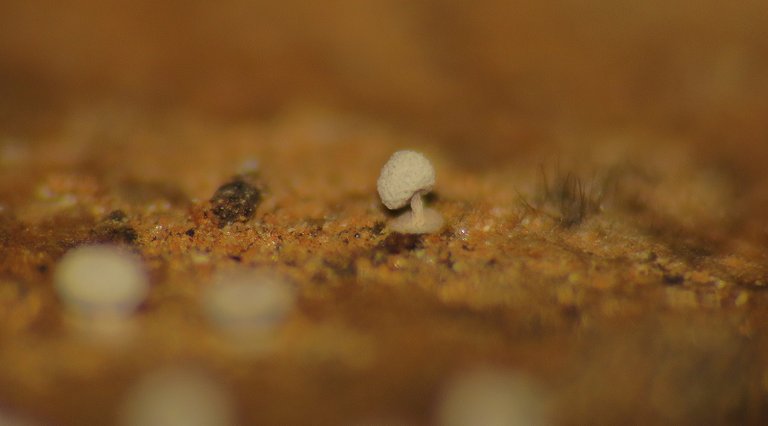
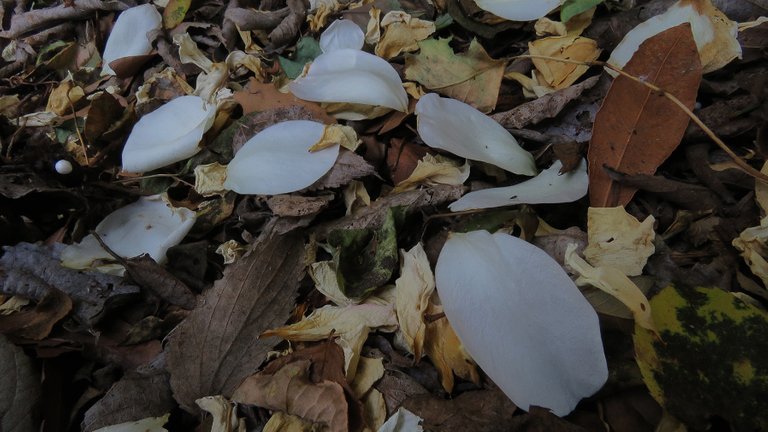
The beautiful insects in blooming flower. Well the Syrphidae larva you catched usually I found in my Coffe garden, but mine have thorn and if contact with the skin it is very itchy. Nice shot for today sir @borjan. Blessing
wow...I'm sure the flowers are very much food for the little animals..that's why they gather there. You just need to look carefully and take pictures.
Happy Sunday 🌞 @borjan
This is a quality content to begin the week with.
Such a blossoming rose. I just hope these insects are not parasites, taking the flowers to be its host.
Wuuuaaauuu que hermoso blog, y las fotografías le quedaron super genial, me encantó muchísimo,
The white roses look especially beautiful. I love the intricate design of veins in the wing of the Chrysoperla carnea. Great macro shooting bro
It's quite rare when neighbors are quiet in early morning and birds voices is a kind of Nice way to wake up naturally.
These are some Beautiful Captures. Happy Sunday and wish you a Wonderful day ahead.
These are beautiful roses you have😸👍👍 i always had a hard time growing them
Looks like you quite enjoyed that shoot with the amount of beasties you found !!!!
!LOLZ
!PIZZA
yes. 😆 It seems that I put the plants in the garden not so much for fruits or flowers but to collect insects.
I gifted $PIZZA slices here:
@hoosie(7/15) tipped @borjan (x1)
Learn more at https://hive.pizza!
This post has been manually curated by @bhattg from Indiaunited community. Join us on our Discord Server.
Do you know that you can earn a passive income by delegating to @indiaunited. We share 100 % of the curation rewards with the delegators.
Here are some handy links for delegations: 100HP, 250HP, 500HP, 1000HP.
Read our latest announcement post to get more information.
Please contribute to the community by upvoting this comment and posts made by @indiaunited.
Congratulations, your post has been upvoted by @dsc-r2cornell, which is the curating account for @R2cornell's Discord Community.
Yay! 🤗
Your content has been boosted with Ecency Points, by @borjan.
Use Ecency daily to boost your growth on platform!
Support Ecency
Vote for new Proposal
Delegate HP and earn more
i dont usually see wild roses like those where i live, people sells them ...
i like how we can see the details of those little insects with your macro photography! really on-point!
So many tiny little insects you found on the roses. Wow. The green ones are nice. Great details.
Those fungi do look like mushrooms 🍄 very interesting to see.
Thanks for sharing @borjan 😊👋🏻 Have an amazing new week ☀️